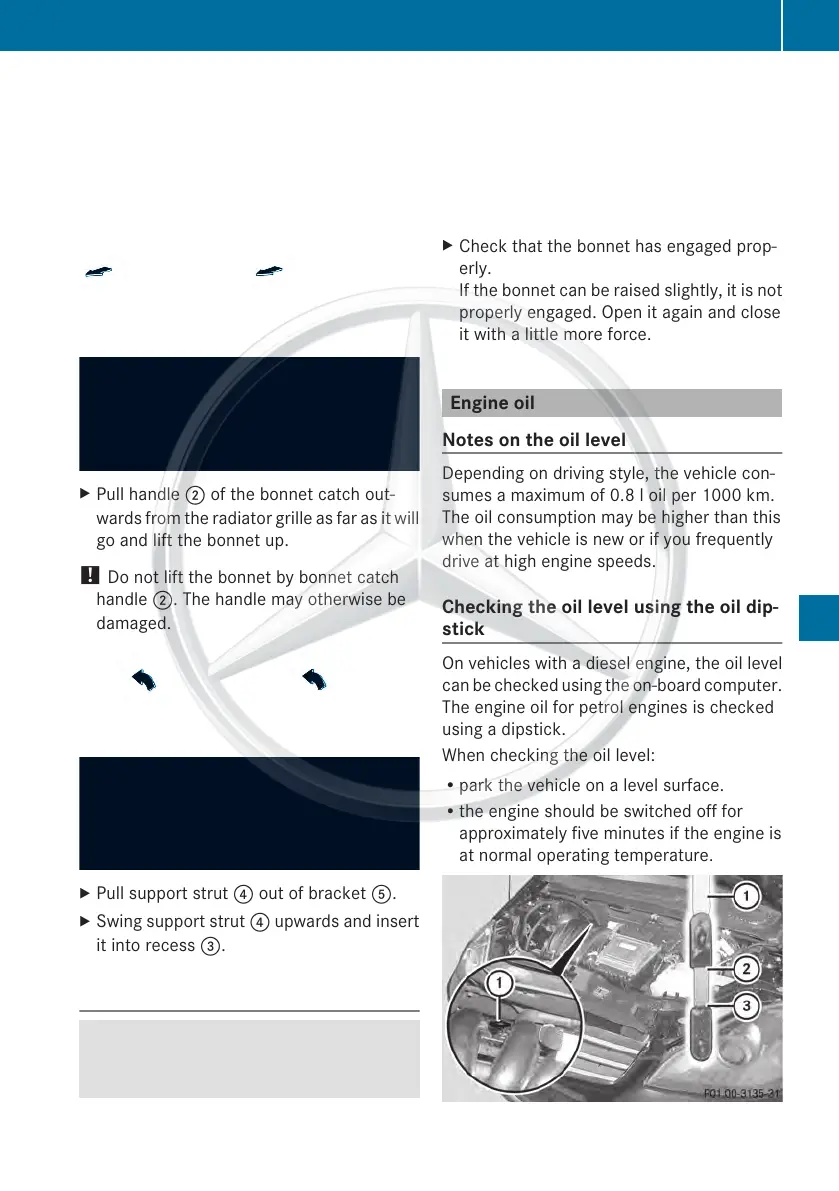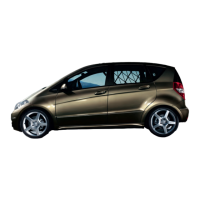X
Pull release lever : on the bonnet.
The bonnet is released.
!
Make sure that the windscreen wipers are
not folded away from the windscreen.Oth-
erwise, you could damage the windscreen
wipers or the bonnet.
X
Pull handle ; of the bonnet catch out-
wards fromthe radiator grille as far as it will
go and lift the bonnet up.
!
Do not lift the bonnet by bonnet catch
handle ;.The handle may otherwise be
damaged.
X
Pull support strut ? out of bracket A.
X
Swing support strut ? upwards and insert
it into recess =.
Closing the bonnet
G
Risk of injury
Make sure that nobody can become trapped
as you close the bonnet.
X
Raise the bonnet slightly and remove sup-
port strut ? from recess =.
X
Swing support strut ? down and press it
into bracket A until it engages.
X
Lower the bonnet and let it fall from a
height of approximately 20 cm.
X
Check that the bonnet has engaged prop-
erly.
If the bonnet can be raised slightly, it is not
properly engaged. Open it again and close
it with a little more force.
Engine oil
Notes on the oil level
Depending on driving style, the vehicle con-
sumes a maximum of 0.8 l oil per 1000 km.
The oil consumption may be higher than this
when the vehicle is new or if you frequently
drive at high engine speeds.
Checking the oil level using the oil dip-
stick
On vehicles with a diesel engine, the oil level
can be checked using the on-board computer.
The engine oil for petrol engines is checked
using a dipstick.
When checking the oil level:
R
park the vehicle on a level surface.
R
the engine should be switched off for
approximately five minutes if the engine is
at normal operating temperature.
Example: vehicles with a petrol engine
Engine compartment
209
Maintenance and care
Z

